Hearing Aid Styles
Invisible-in-the-Canal (IIC)
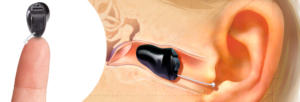
- Most invisible, discreet hearing aid option
- Cosmetically appealing and virtually unnoticeable
- Most secure fit for physically active individuals
- Custom molded
- Deep fit helps to reduce occlusion or “plugged up” feeling
- Appropriate for Mild-Moderate hearing losses
- Adaptive noise reduction technology – IIC hearing aids are environmentally adaptive
- Fully automatic for all environments
- Microphone and Receiver and contained in the small device, which may limit power output
- Limited flexibility for programming adjustments and multiple memories
- Inability to change volume and fine tune memory to specific need
- Not Bluetooth compatible
Completely-in-the-Canal
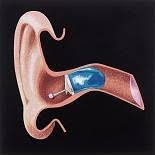
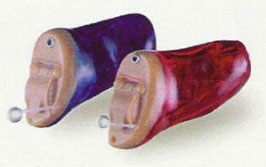
- Nearly invisible; only faceplate can be seen
- Secure fit for physical activities
- Appropriate for Mild-Moderate/Moderate Severe hearing losses
- Deep placement cuts down on wind noise.
- Available with Bluetooth® wireless technology
- Custom molded to shape of ear canal
- Available with external controls, for those who prefer an external switch – some flexibility for adjustments
- May be compatible with Bluetooth
- Compatible with Bluetooth wireless technology, so they can communicate with personal electronics (e.g. cell phone/tablet)
- Communicate with one another to improve binaural hearing performance.
- CICs may communicate with one another to improve binaural hearing performance.
- Microphone and Receiver and contained in the small device, which may limit power output
- Can risk occlusion – “stuffed up feeling” – depending upon fit and hearing loss
- Smaller batteries, may be at risk for quicker battery drain
In-The-Canal (ITC)
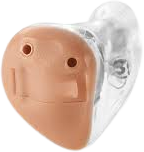
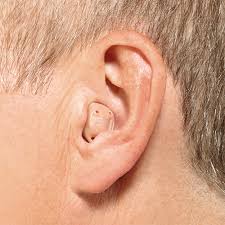
- Custom molded for a precision fit
- Easy to insert and remove – one step insertion and removal
- Appropriate for Mild-Severe hearing losses
- Available with external controls for quick and easy adjustments and switching of memories – flexibility for adjustments
- May be compatible with Bluetooth wireless technology, so they can communicate with personal electronics (e.g. cell phone/tablet)
- May communicate with one another to improve binaural hearing performance.
- Can offer ear level controls for quick adjustments
- Larger battery provides longest battery life
- Do not interfere with wearing glasses
- Available in all technology levels
- Can have a slightly larger battery size for increased battery life
- Microphone and Receiver and contained in the small device, but are more separated than in the smaller IIC or CIC
- Can be automatic, changing with the surrounding environment
- Fairly visible
- Can risk occlusion – “stuffed up feeling” – depending upon fit and hearing loss
In-The-Ear
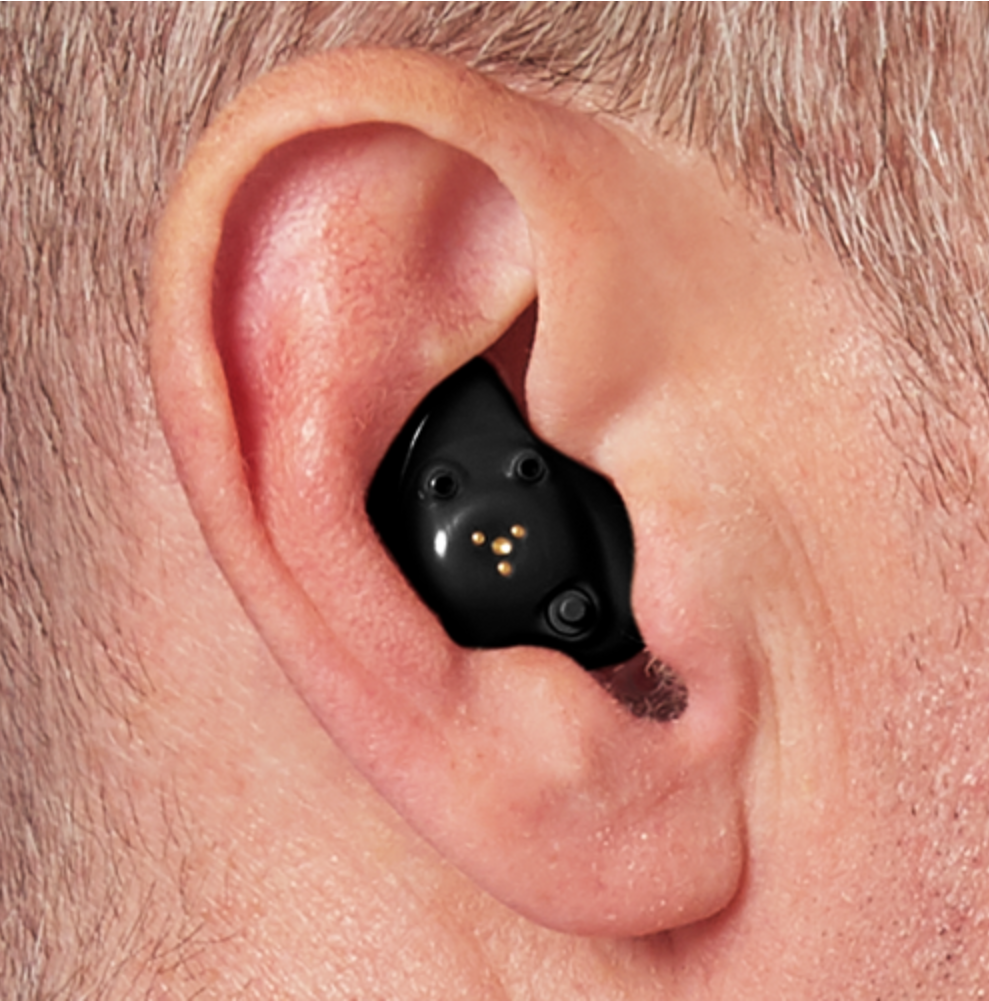
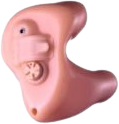
- Easiest style to insert and remove – single step process
- Appropriate for Mild-Profound hearing losses – all hearing losses can be accommodated
- Available with external controls for quick and easy adjustments and switching of memories – flexibility for adjustments
- May be compatible with Bluetooth wireless technology, so they can communicate with personal electronics (e.g. cell phone/tablet)
- May communicate with one another to improve binaural hearing performance.
- Larger battery type is easiest to handle and provides longest battery life
- Microphone and Receiver and contained in the device, but are fairly separated
- Custom molded to fit the external contours of the ear, can be equipped with external switches, making them easy to use.
- Larger batteries offer wearers of full-shell hearing aids a long battery life
- Can risk occlusion – “stuffed up feeling” – depending upon fit and hearing loss
- Visible, though can be matched to skin tone
Remote Microphone

- Unique design uses ITC or ITE as base
- Microphone is placed at the end of a flexible tube, which is then placed securely in the concha symba of the pinna.
- The rest of the instrument is inserted into the ear as with conventional CIC designs.
- Separation of microphone and receiver allows for greater flexibility in fitting
- Appropriate for Mild-Severe hearing losses
- Available with external controls for quick and easy adjustments and switching of memories – flexibility for adjustments
- May be compatible with Bluetooth wireless technology, so they can communicate with personal electronics (e.g. cell phone/tablet)
- May communicate with one another to improve binaural hearing performance.
- Allows for the benefits of Receiver-in-the-Canal without getting in the way of glasses
- Moderately complex, Two step insertion
- Remote microphone aspect of the hearing aid needs extra care or may get clogged
Receiver-in-the-Canal (RIC)
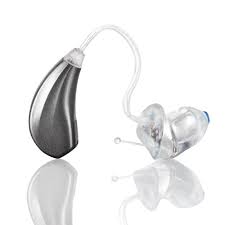
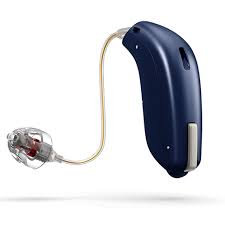
- Lightweight, stylish design
- Can be fairly invisible – cosmetically appealing. Often can be hidden by hair
- Appropriate for all hearing losses: Mild – Profound
- Flexible fitting means most repairs can be made the same day
- Available with an open fitting for comfort and more natural sound – less risk for occlusion or “stuffed up” sensation
- Available with external controls, for those who prefer an external switch – flexibility for adjustments
- May be compatible with Bluetooth wireless technology, so they can communicate with personal electronics (e.g. cell phone/tablet)
- Communicate with one another to improve binaural hearing performance.
- Receiver/speaker is placed in the ear canal, mounted to a comfortable, flexible dome that allows sound to pass more naturally through the ear canal.
- Receiver is separated from microphone, which is in device. This reduces risk for feedback
- Parts are interchangeable, which increases flexibility and life of unit even if hearing loss changes.
- Reduces wind noise and eliminates the need for acoustic tubing, such as the kind used in Behind the Ear hearing aids
- Can sometimes get in the way of glasses
Behind-the-Ear (BTE)
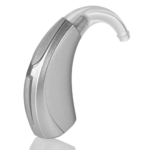
- The most flexible fitting type, available with all technology options
- Offers the widest range of programming options
- Available with wireless connectivity
- Midsize battery offers battery life up to 7 days
- Most flexible and adaptable technology available.
- May be compatible with Bluetooth wireless technology, so they can communicate with personal electronics (e.g. cell phone/tablet)
- Communicate with one another to improve binaural hearing performance.
- They need to be coupled with something to anchor it to the ear.
- They can either be fit with a custom earmold that is molded to fit the outer ear
- They can be mounted to open-canal earpieces/domes to prevent the “plugged up” feeling (occlusion) that some users experience as confining.
- Both the microphone & speaker are housed in the case behind the ear, with sound traveling to the ear canal through a tube.
- Can be equipped with buttons or a switch that allows for volume control or program/memory changes settings
- Also have the advantage of using larger battery sizes, for longer battery life and greater ease of use.
- Many BTEs come in smaller versions for certain types of hearing losses
Power Behind-the-Ear
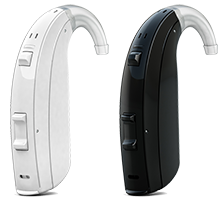
- Flexible fitting, available at all technology levels
- Has the ability to reach much higher output levels to accommodate severe-to-profound hearing losses
- Always coupled with an ear mold
- Wide range of programming options
- May be compatible with Bluetooth wireless technology, may communicate with personal electronics (e.g. cell phone/tablet)
- Communicate with one another to improve binaural hearing performance.
- Similar in construct to the BTE hearing aid described above, the Power BTE hearing aid also houses the microphone and receiver in the unit that sits behind the ear.
- The sound is diverted into the ear through a tube that connects the unit with an earmold. The earmold should be fit snug and comfortably, but should provide a seal so that sound cannot escape.
- Power BTE hearing aids may use slightly larger batteries, although the overall design is much sleeker than ever before.



